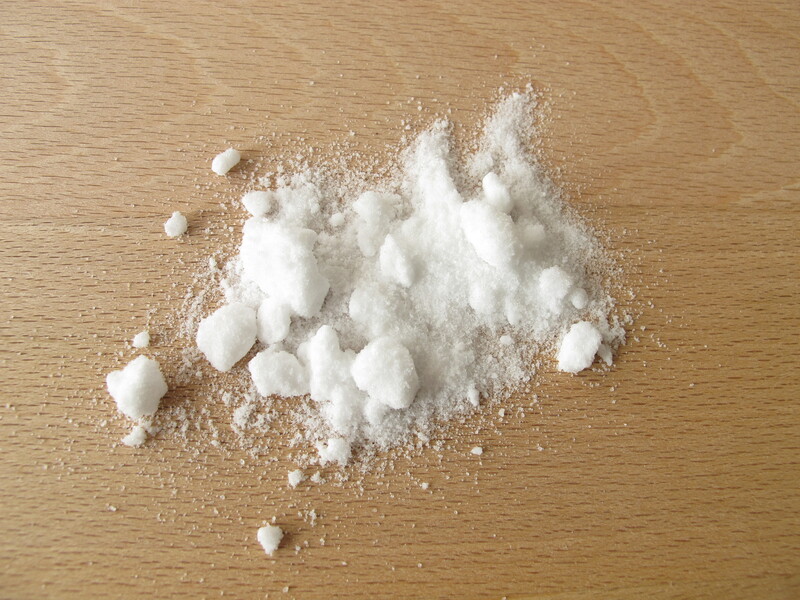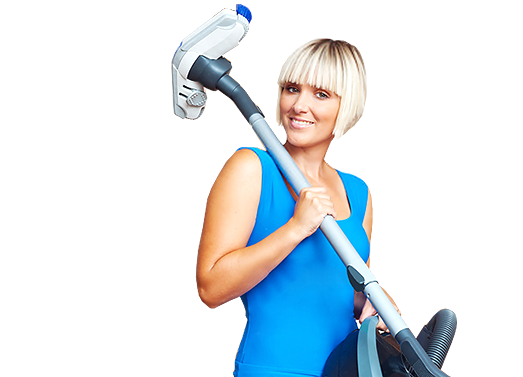Maximize Your Deposit: An End of Tenancy Cleaning Blueprint for Tenants
Posted on 14/06/2025
Maximize Your Deposit: An End of Tenancy Cleaning Blueprint for Tenants
Moving out of a rental property? The end of a tenancy can be a stressful time, especially when it comes to securing the return of your deposit. One of the most critical aspects of ensuring you get as much of your deposit back as possible is proper cleaning. In this comprehensive end of tenancy cleaning guide, we'll provide you with a step-by-step blueprint to prepare your rental for inspection and maximize your deposit return.
Why End of Tenancy Cleaning Matters
Most tenancy agreements stipulate that the property must be left in a clean and tidy condition. Landlords and agents will inspect the premises closely, and even minor cleanliness issues can lead to deductions from your deposit. Investing effort into an end of tenancy clean not only leaves a good impression but also demonstrates your respect for the property. Ultimately, a thorough cleaning is your secret weapon in getting your full deposit back.

Understanding Your Tenancy Agreement
Before you grab your cleaning supplies, review your tenancy contract thoroughly. Some agreements may outline specific cleaning requirements, such as professional carpet cleaning or cleaning of appliances. Look for clauses regarding cleanliness standards to avoid surprises during the inspection.
- Did your landlord provide a cleaning checklist?
- Are there penalties for not hiring a professional service?
- Is proof of cleaning (such as a receipt) required?
Tip: If your agreement mentions "professional cleaning," consider hiring a reputable end of tenancy cleaning company--sometimes, this is the easiest way to protect your deposit.
Essential End of Tenancy Cleaning Checklist
To ensure you haven't missed any critical areas, use this comprehensive end of tenancy cleaning checklist. It covers every room and includes often-overlooked details that could make a difference during the inspection.
1. Kitchen Deep Clean
- Oven and Hob: Remove all grease, burnt-on food, and stains. Clean oven racks and trays thoroughly.
- Extractor Fans & Filters: Degrease filters and wipe down fan covers.
- Fridge & Freezer: Defrost, clean shelves and drawers, and leave the doors ajar to prevent mold.
- Cabinets & Drawers: Wipe inside and outside, removing crumbs and stains.
- Sink & Taps: Remove limescale and disinfect.
- Worktops & Splashbacks: Clean and polish all surfaces.
- Floors: Sweep, mop, and remove any stains.
- Small Appliances: Wipe down toasters, kettles, and microwaves.
2. Bathroom and Toilets
- Toilets: Disinfect inside and out, including the base and tank.
- Showers & Bathtubs: Remove soap scum, hair, and limescale.
- Sinks & Taps: Polish chrome fittings and remove stains.
- Mirrors: Polish to a streak-free shine.
- Tiles & Grout: Scrub to remove mold and mildew. Reseal if needed.
- Floors: Mop thoroughly, paying attention to corners.
3. Living Room & Bedrooms
- Dusting: Dust all surfaces, including skirting boards, light fittings, and shelves.
- Carpets & Rugs: Vacuum thoroughly. If stained, consider professional cleaning.
- Hard Floors: Sweep and mop.
- Windows: Clean inside and outside (where accessible), as well as window sills and tracks.
- Soft Furnishings: Vacuum sofas, curtains, and cushions.
- Wardrobes & Drawers: Empty and wipe inside and out.
- Marks & Scuffs: Remove any marks from walls and doors when possible.
4. Hallways & Entrances
- Floors: Sweep and mop.
- Coat Racks & Hooks: Dust and wipe down.
- Light Switches & Handles: Disinfect all touchpoints.
5. Outdoor Areas (if applicable)
- Garden or Patio: Mow lawn, remove weeds, sweep patios.
- Balconies: Clean railings and clear debris.
- Bins: Empty and clean bins.
6. Miscellaneous Tasks
- Light Fixtures: Dust and wipe all lamps and bulbs.
- Smoke Detectors: Check batteries and wipe units.
- Air Vents: Remove dust build-up.
- Remove Cobwebs: Check corners and ceilings in every room.
Top End of Tenancy Cleaning Tips for Tenants
- Start Early: Begin cleaning a few days before your move-out date to avoid missing any tasks.
- Use Quality Cleaning Products: Invest in products that tackle stubborn grime, limescale, and stains effectively.
- Don't Overlook Appliances: Landlords pay close attention to ovens, fridges, washing machines, and dishwashers.
- Repair Minor Damages: Fix small holes, replace light bulbs, and tighten loose handles.
- Take Before & After Photos: Having photographic evidence of your cleaning efforts is invaluable in dispute cases.
- Ask Your Landlord for Feedback: If possible, get a pre-inspection to learn if any areas need more attention.
DIY vs. Professional End of Tenancy Cleaning
Deciding between a do-it-yourself end of tenancy clean and hiring professionals can depend on time, effort, and the standards required in your contract.
Pros of DIY Cleaning
- Cost-effective: Save money on cleaning fees.
- Control: You decide where to focus extra attention.
Cons of DIY Cleaning
- Time-consuming: Deep cleaning can take several days.
- Lack of Guarantee: No professional receipt or assurance for the landlord.
Benefits of Professional End of Tenancy Cleaners
- Expertise: Professionals know how to tackle trouble spots efficiently.
- Comprehensive Service: All nooks and crannies are covered.
- Saves Time: Focus on other moving tasks while cleaners work.
- Cleaning Receipt: Provides evidence of a professional clean, often required by letting agents.
- Deposit Retrieval Guarantee: Many companies offer a re-clean if the landlord isn't satisfied.
Tip: If your property is particularly large or in a heavily soiled state, a professional end of tenancy cleaning service can be a worthwhile investment for peace of mind.
Common Areas Tenants Miss (And How To Avoid Them)
Even the most diligent tenants can overlook certain spots. Here are commonly missed areas that could cost you deposit deductions:
- Behind and Under Appliances: Pull out the fridge, oven, and washing machine to clean accumulated dirt.
- Window Tracks and Sills: Dust, dead insects, and mold love to accumulate here.
- Inside Extractor Fans: Remove filters and wash them.
- Light Switches and Power Sockets: Wipe down to remove fingerprints and grime.
- Bathroom Ventilation Fans: Clean to prevent mold and dust buildup.
- Skirting Boards and Door Frames: Wipe and dust these overlooked areas.
- Shower Curtains and Bath Mats: Wash or replace as needed.
- High-Up Shelving: Dust shelves in closets and above units.
Packing and Cleaning: Organize for Success
The process of packing and end of tenancy cleaning should go hand-in-hand for the best results. Here's how to organize both efficiently:
- Pack Room by Room: Empty one room at a time, clean as you go, then seal it off.
- Label and Document: Ensure boxes are labeled and take photos of cleaned areas and fixtures.
- Schedule Your Cleaning: Set aside enough time--don't leave all cleaning for moving day.
- Dispose of Waste Properly: Arrange for rubbish, unwanted items, or recycling well ahead of your departure.
Checklist: Final Inspection Readiness
Use this final checklist to confirm you haven't forgotten any step in your end of tenancy cleaning process:
- All personal belongings removed?
- Property professionally or thoroughly cleaned?
- All appliances empty, clean, and switched off?
- Windows clean inside and outside (where reachable)?
- All bins emptied and cleaned?
- Keys and all original documentation ready for handover?
How to Deal With Stubborn Stains and Damage
Stubborn stains on carpets, upholstery, or walls can raise red flags with your landlord. Here's how to tackle persistent dirt or minor damage before your final inspection:
- Carpets: Use specific carpet stain removers or hire a carpet cleaning machine.
- Walls: Use a gentle cleaning solution or magic eraser sponge for marks. For deeper damage, touch up with matching paint.
- Tiles and Grout: Lemon juice and baking soda can lift tough stains and whiten grout.
- Glass and Mirrors: A mix of vinegar and newspaper can produce a flawless shine.
For more extensive issues, like carpet burns or wall holes, consult your landlord before attempting repairs. Sometimes, a professional fix is required and may cost less if arranged in advance.
Communicating with Landlord or Letting Agent
Clear communication is vital when ending your tenancy.
- Notify your landlord or agent of your planned moving out date.
- Request an inventory check with them present, if possible.
- Ask for feedback after cleaning, so you have a chance to address any concerns before final inspection.
- Keep all receipts and evidence of professional cleaning services.

Frequently Asked Questions: End of Tenancy Cleaning and Deposit Return
Do I really need a professional cleaning service?
Not always, unless your tenancy agreement states so. A thorough, well-documented self-clean can be equally satisfactory, provided standards match those at move-in.
What if the landlord still tries to deduct my deposit?
Dispute the deduction with your tenancy deposit scheme (TDS) using your check-in and check-out inventories, receipts, and photographs as evidence. The TDS is there to protect both landlord and tenant interests.
How long does the landlord have to return my deposit?
UK law requires landlords to return your deposit within 10 days of agreeing how much you'll get back. Disputes may extend this period.
Can deductions be made for wear and tear?
No. Normal wear and tear is not deductible. Only damage or insufficient cleaning outside typical use can lead to justified deductions.
Conclusion: Safeguard Your Deposit with Expert End of Tenancy Cleaning
Maximizing your deposit is all about preparation and attention to detail. By following this end of tenancy cleaning blueprint for tenants, you'll have the confidence to leave your property in excellent condition, ready to impress even the most fastidious landlord or letting agent.
- Review your tenancy contract to confirm cleaning obligations.
- Use our thorough cleaning checklists and tips to tackle every room.
- Address repairs or minor damages as soon as possible.
- Consider professional help if needed and keep receipts as proof.
- Communicate transparently with your landlord for a smoother move-out process.
By putting in the effort now, you're investing in a hassle-free departure and maximizing your end of tenancy deposit return.
Ready for the Next Chapter?
Good luck with your move and remember--an immaculate property today means a fuller deposit tomorrow!





